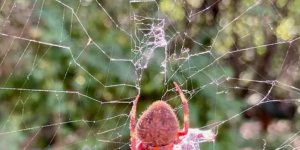| News / Science News |
Ancient DNA reveals an early African origin of cattle in the Americas
Cattle may seem like uniquely American animals, steeped in the lore of cowboys, cattle drives and sprawling ranches.

Ancient DNA suggests African cattle arrived in the Americas more than a century before records indicate. Photo: Florida Museum/Jeff Gage
In a study, researchers at the University of Florida analyzed ancient DNA from Spanish settlements in the Caribbean and Mexico.
Their results indicate cattle were imported from Africa as far back as the early 1600s, more than 100 years before their arrival was officially documented.
Records kept by Portuguese and Spanish colonists reference breeds from Spain but make no mention of transporting cattle from Africa. But researchers have reason to suspect historical records were incomplete.
"The earliest ranchers in Mexico were nearly all of African ancestry," said lead author Nicolas Delsol of the Florida Museum of Natural History.
"We know that people like the Fulani in West Africa formed herder societies in which they lived in what could be described as a symbiosis with cattle. Both these lines of evidence made us think there was a strong possibility that the Spanish brought cattle from the same region as the people they enslaved."
Previous genetic studies seem to support this idea. DNA from modern American cattle reveals hybridization with breeds from Africa and Asia. Without archaeological data, however, it's not possible to pinpoint exactly when these events took place.
The only way to know for sure, Delsol said, was to sequence ancient DNA from cows and bulls preserved during the colonial era. Delsol gathered 21 bones from several archaeological sites.
After extracting DNA from bone material, he compared their genetic sequences with those of modern breeds around the world. As expected, most of the sequences shared a strong relationship with cattle from Europe, but a tooth found in Mexico City stood out from the rest.
Buried in the tooth's mitochondria was a short sequence virtually unknown from anywhere other than Africa. The cow it came from likely lived in the late 1600s, pushing back the introduction of African cattle by more than a century. (U.S. National Science Foundation)
YOU MAY ALSO LIKE





